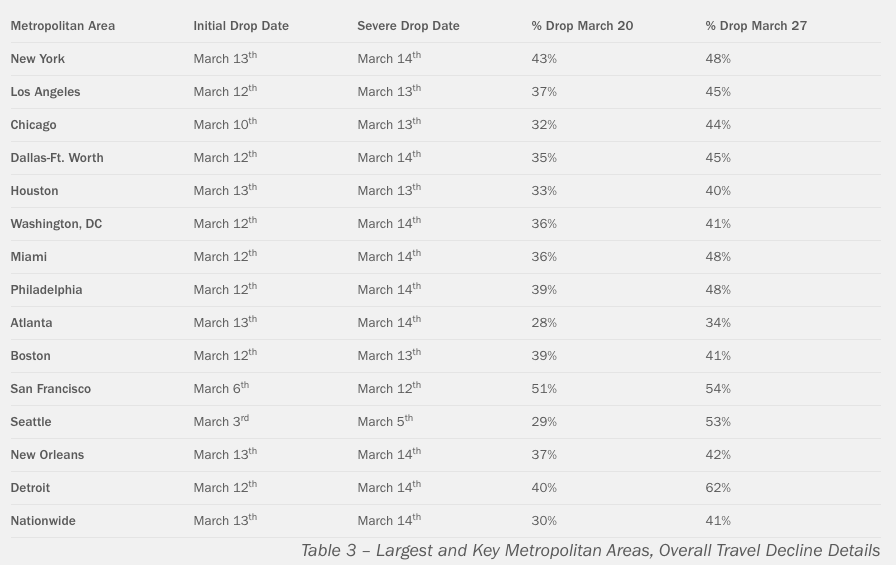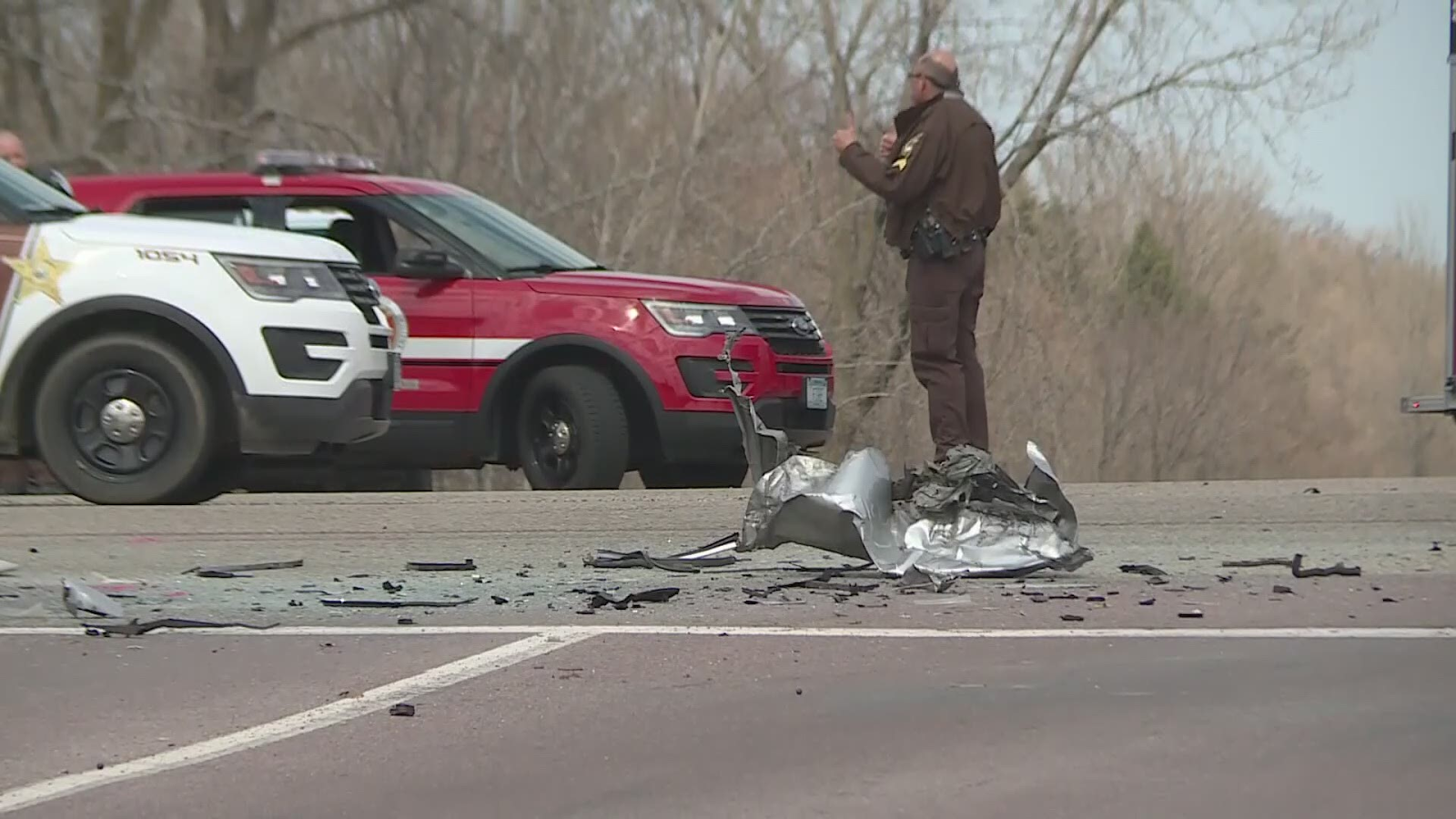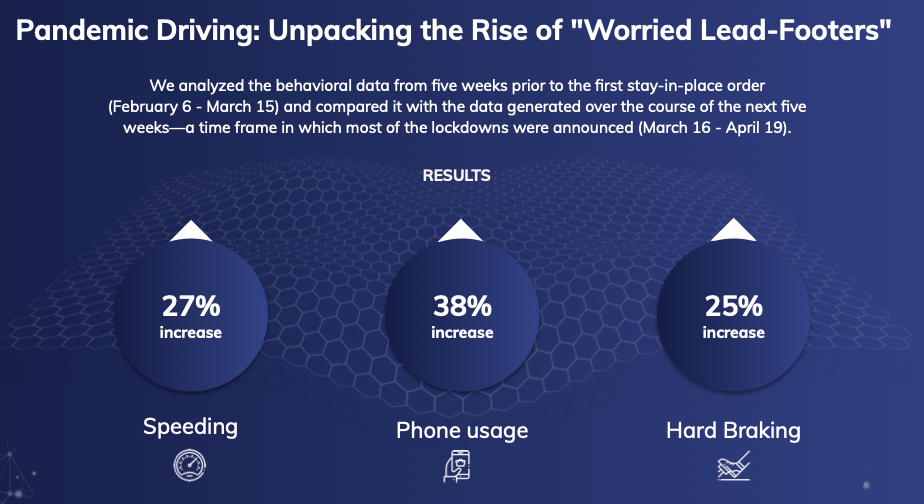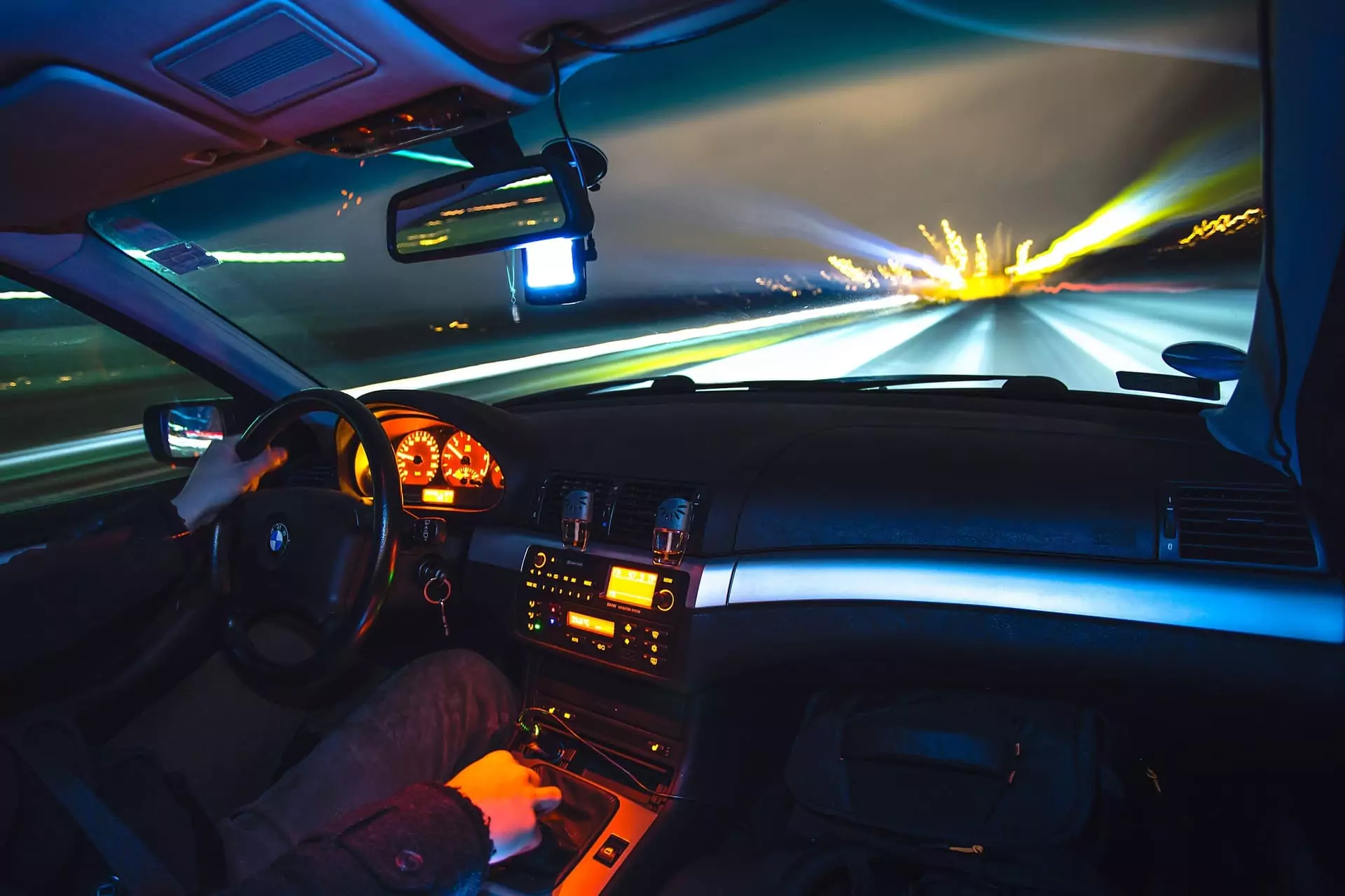Social distancing measures have taken Americans back into their homes, emptying workplaces, shopping centers, and public areas that used to be crowded. This has also been the case for the country’s roadways.
According to the transportation-data firm Inrix, at the beginning of the restrictions enforced by the government to prevent the spread of COVID-19, traffic nationwide decreased 41 percent compared with pre-pandemic volumes. Some of the country’s busiest highways emptied with volumes down by 48 percent in New York, 45 percent in Los Angeles, and 41 percent in Chicago.

Source: Inrix. INRIX U.S. National Traffic Volume Synopsis: Issue #2 (March 21-27, 2020)
Empty Roads becoming RaceTracks
With roads now more spacious, speeders have taken this particular health crisis to turn roadways into race tracks. According to The Washington Post, reckless driving has increased since March, leading to an excessive number of speed-related accidents and fatalities.
“We’re getting reports every week of dozens of drivers being cited for traveling over 100 miles an hour. That’s just insanity for our roadways.” Michael Hanson, Director of the Office of Traffic Safety in Minnesota
In Minnesota, during the first 45 days after the state’s stay-at-home order went into effect, Michael Hanson, Director of the Office of Traffic Safety in Minnesota, reported 42 people killed in traffic collisions. The number doubled the statistics from the same period in 2019.
 Source: Kare11 Video Reportage
Source: Kare11 Video Reportage
State Troopers across the country have been constantly registering a topping speed of 130mph. Increasing reports of drag racing, drivers trying to hit land-speed records, and more related crashes have kept law-enforcement agencies across the country preoccupied and searching for solutions to protect public safety amidst the pandemic.
“The trend is very concerning. At a time of national crisis, drivers should not be turning our roadways into racetracks.” Catherine Chase, President of Advocates for Highway and Auto Safety.
Although the trend has come as no surprise in a moment where traffic congestion during the commute has massively decreased; what really concerns speed-enforcement officers are people driving in excess of 80 mph on neighborhood streets where pedestrians and cyclists have become regulars.
Faster and More Distracted
Another risk factor involved in this emerging crisis is that not only have drivers become more reckless, but also more distracted. According to a study released by Zendrive, motorists are braking harder and using their cellphones more while driving. The data suggests that, in April, speeding increased 27 percent more than the average, while phone usage on the nation’s roads increased by up to 38 percent. In addition, hard braking went up to 25 percent when compared with pre-pandemic records.

Source: Zendesk
In a time where hospitals are overloaded and the main focus is taking care of people infected with COVID-19, this type of behavior is seen as frustrating to many and has become a key focus for law enforcement agencies.
“These people are not only creating a danger to themselves, a danger to others, but it’s at a time when New York needs every hospital bed it could get for a victim of the virus. This is just not only dumb but incredibly selfish.” Sam Schwartz, former New York City Traffic Commissioner.
Could Boredom be the Cause?
Local and national public safety organizations have begun to look for possible explanations that can help to create strategies to control this behavior. Jonathan Adkins, Executive Director of the Governor Highway Safety, explained that drivers may be under the impression that given the current situation, police officers are not prioritizing traffic signals; particularly speed and stops.
Limited resources and re-allocations of law enforcement services to help with the current health crisis are also mentioned as possible explanations on the emergence of this trend in the nation’s roadways.
For the psychologist, Emmanuel Robinson, Senior Study Director at Westat’s Center for Transportation, Technology and Safety Research, this type of behavior may not differ much from what speeders normally do: “It could be boredom, which is one of the reasons that typically come up for why people speed. They want excitement; they want the adrenaline rush of it,” he explained in an interview for The Washington Post.
One thing is clear, whether it be the normal adrenaline rush or a way of dealing with the stress of the pandemic, the danger it represents to the public needs to be addressed and taken care of.
On the bright side, traffic safety advocates and speed-enforcement officers are beginning to push for more education and enforcement in an effort to prevent more casualties, and to better manage the situation as some states reopen and the nation’s roadways go back to normal.
Should you be a law enforcement agency looking to upgrade to smarter speed enforcement products, we invite you to review our: PMD 10&12 (portable and easily deployed speed awareness RADAR display mounted on sign post and utility poles); ‘StealthStat II’ (covert data collection to analyze traffic data and identify speed issues); our ‘ProLaser 4‘ (our latest handheld LiDAR gun with TrafficTrak Androis app for wireless data collection, plus our new ‘Following Too Close’ mode); or our Eagle 3 car radar, which is the smallest mounted radar in the market!

